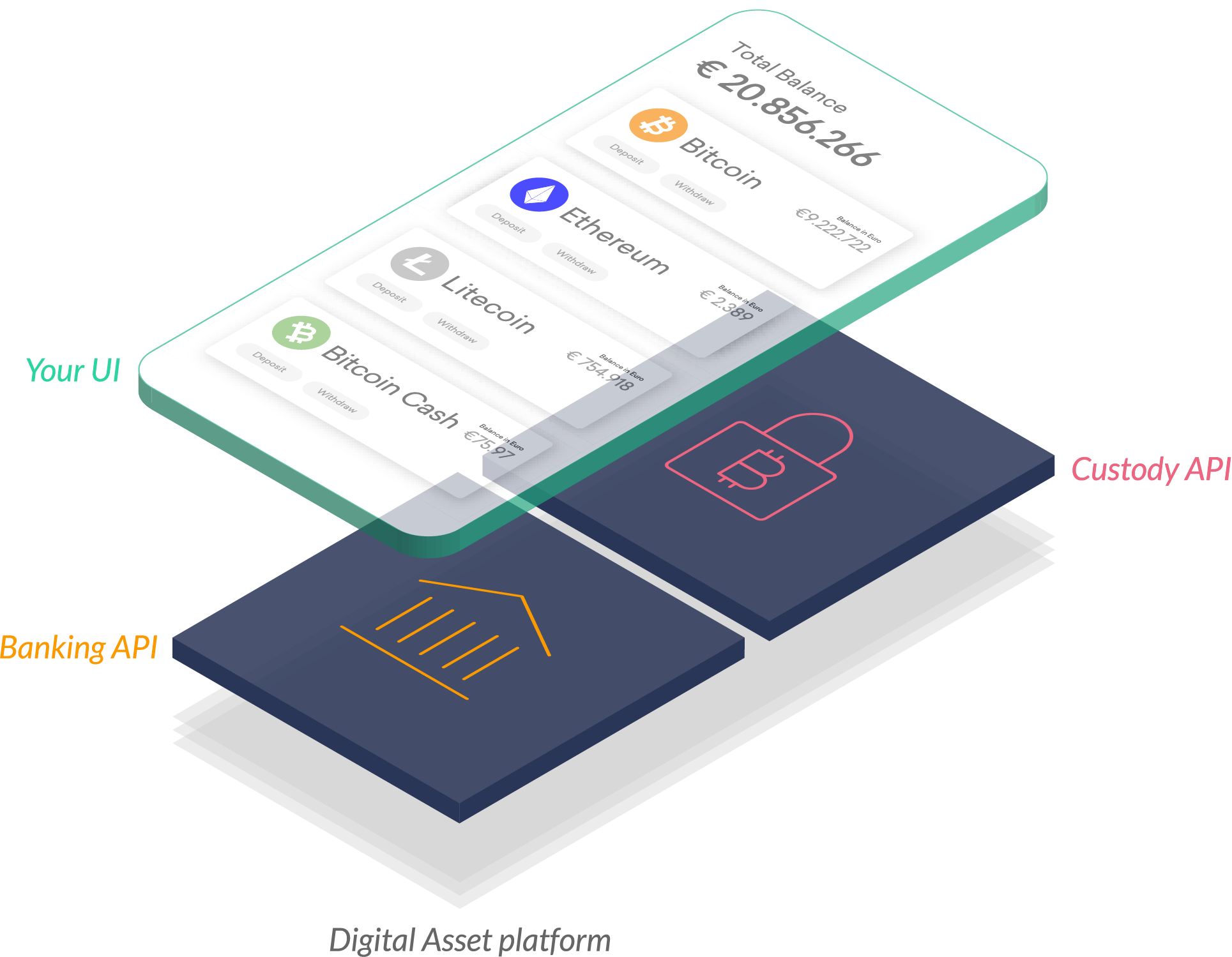solaris Digital Assets: driving digital asset adoption
5 minute read


When solarisBank launched the Blockchain Factory in 2018 with the goal of bridging the worlds of blockchain and banking, we really hit the nail on the head. As a tech company with a full German banking license, we became the go-to address for ambitious digital asset pioneers looking for a licensed banking provider. Today, one and half years later, we can announce our next major step into the digital asset industry. But before we reveal any more, we’d like to illustrate what drove us to take this step.
Over the past year and a half we’ve made some important contributions to the European digital asset ecosystem. Our banking infrastructure has spawned some truly groundbreaking innovations. In the beginning, there was Bitwala, the first crypto-banking offering in Germany, that used our digital banking APIs to offer fully fledged crypto bank accounts and branded cards. Next came Bitbond, who used our digital banking infrastructure to conduct the first regulated security token offering (STO) in Germany. In September we helped Börse Stuttgart with the launch of Börse Stuttgart Digital Exchange, the first regulated trading venue for digital assets in Germany.
There are many more of these success stories waiting to be told. Cryptocurrencies have already become a widely popular application of digital assets, and their success is fueling the tokenization of more and more asset classes. The Global STO study by BlockState found that over 120 STOs have already been conducted round the world.
Whether it is currencies, equity, debt or real estate, any asset can be issued as a token on a blockchain protocol.
In decentralized networks, digital assets can change ownership without the need for intermediaries, making transactions faster and cheaper, even at a global scale. Thus, the tokenization of traditional assets into digital assets has the potential to completely revolutionize the way we exchange value. It is no surprise then, that major financial institutions, tech companies, stock exchanges, central banks and governments have all been following the development of the digital asset ecosystem very closely. Facebook’s Libra, JP Morgan’s JPM Coin and the plans announced by the central Bank of France to test a digital currency are just some examples for concrete initiatives in the space.
How come the digital asset revolution has not happened yet?
Despite all the excitement, the mass adoption of digital assets into every realm of our financial lives has yet to occur. How come? We identified three key hurdles that currently hinder digital asset pioneers from embracing digital assets and their transformative potential.
Firstly, blockchain technology is unfamiliar terrain for many businesses. The low-level complexities introduced by decentralized protocols deter many businesses from developing digital asset services themselves. This makes assessing the feasibility of initiatives difficult, stretching the time to market for these businesses indefinitely.
Secondly, the rapid rise of digital assets has alerted regulators across the globe to their associated risks. Jurisdictions across the board are starting to impose regulations on the storage and trade of digital assets. With the implementation of the Fifth EU Anti-Money Laundering Directive (AMLD5) in Germany, any business storing digital assets for their customers will require authorization from the German regulator BaFin from January 2020 onwards. While this is a necessary precaution, it requires digital asset pioneers to comply with local regulation, adding additional complexity to launching a digital asset service.
Finally, even if a company can get the required licensing, the infrastructure for storing digital assets safely is not yet mature enough to enable mass adoption, resulting in sub-par user experiences that do not meet modern expectations.
What’s so difficult about storing digital assets?
The access to a digital asset is granted by means of a so-called private key. When you wish to transfer an asset, you sign the transaction with that private key. The transaction is then broadcasted to the blockchain network to be validated. A valid signature can only be generated by the owner of the corresponding private key. However, this also means that if the private key is lost or stolen, it will result in permanent loss of the asset. Therefore, to safely store digital assets, it is paramount that the private key to those assets is kept safe.
One way to prevent the private key from being stolen or lost is to store it on a password protected online server. However, these are vulnerable to hackers, and, indeed, have been hacked many times in the past. Once the hacker moves an asset out of the wallet, it is forever lost. The very nature of blockchain protocols necessitates that transactions cannot be reversed.
The alternative is to store the private key offline, on a piece of parchment or a hard drive physically locked away in a fortified, remote location. While it would be comparatively safe there, it wouldn’t be particularly accessible. Every time a user wishes to make a transaction, they would have to travel and retrieve the private key in physical form. Not a very useful solution when trying to act in global markets that change every second.
Hence, digital assets pioneers face a dilemma between security and accessibility when looking to store the digital assets of their customers. Either they opt for an offline storage the ensures security but compromises on the user experience, or they opt for storage on an online server and risk the security of their customers assets.
Consequently, the vast potential of digital asset technology remains largely untapped.
The more we spoke to market participants struggling with these hurdles, the more we recognized that solarisBank was optimally positioned to address them. As a fully licensed Banking-as-a-Service platform with API access and plenty of talented blockchain experts, we had the ideal requisites for building a custodial service. If we could find a way to safely store digital assets without compromising on accessibility, we could become a 360-degree platform for banks, fintechs, STO platforms, crypto exchanges and many others looking to offer compliant and user-friendly digital asset services.
After one year of innovating, building and optimizing, we are proud to announce today the official launch of our new subsidiary: solaris Digital Assets GmbH

solaris Digital Assets is an API-accessible digital asset platform that provides a cutting-edge custodial solution alongside the full suite of solarisBank’s digital banking services. Through our platform approach, our partners can simply connect their frontend to our APIs and integrate our custody services directly into their websites and apps. This way, our partners can avoid building complex custodial solutions and having to apply for licensing themselves; instead, they can focus on creating an outstanding user experience in their own look and feel, all while staying secure and compliant.
How does our Digital Assets platform work? Our custodial solution stores the private keys on a distributed cluster of hardware security modules, that are connected to a digital bookkeeping system. This ensures that the assets in custody are stored out of reach of malicious agents but still instantly accessible to the end-user. Every time a customer wishes to transfer assets from their wallet, a multi-validation process kicks in to ensure the authenticity of the customer’s intent. In addition, all transactions are monitored for suspicious activity by our compliance engine.
Driving digital asset adoption
The launch of our new subsidiary solaris Digital Assets marks a key milestone in achieving our vision of driving digital asset adoption. With this step, we commit ourselves to become the leading infrastructure provider for the European digital asset ecosystem. We trust that by lowering the hurdles for digital asset pioneers to create value, we are contributing to the development of a functional and secure decentralized world, which will transform the way we exchange value around the globe.


